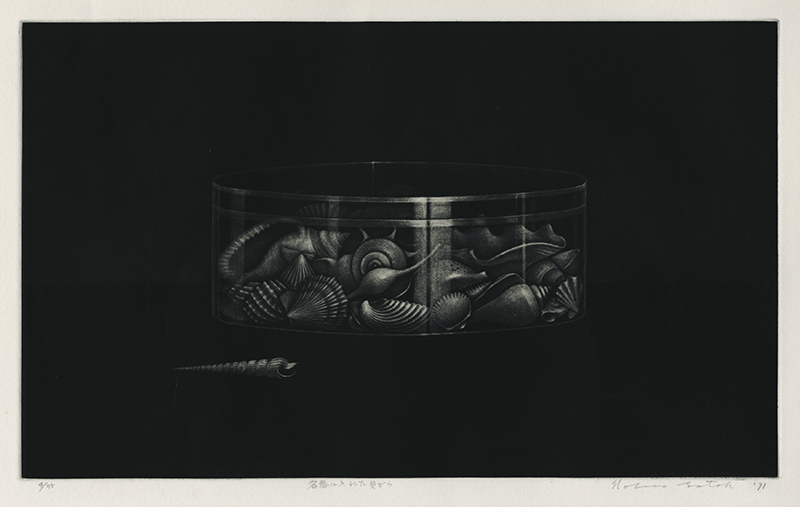
19th, 20th & 21st Century Fine Prints
707-546-7352 · fax 707-546-7924 · web: www.annexgalleries.com · email: artannex@aol.com
Shells in the Box (a.k.a. Shells in a Glass Box) by Nobuo Satoh

Shells in the Box (a.k.a. Shells in a Glass Box)
Nobuo Satoh
Shells in the Box (a.k.a. Shells in a Glass Box)
Nobuo Satoh
1926 - 2005 (biography)Nabuo Satoh creates a kind of visual juxtaposition in which the thin, delicate cage of a glass box encloses a collection of time-polished seashells. The glass and shells are presented in a reversal of strengths, transforming an object of fragility into the role of protector for the solid skeltons of ancient forms. A lone auger shell is rendered vulnerable in its solitary state in the lower left foreground. Satoh has chosen a simple, monochromatic palette of blue-black ink for this mezzotint, allowing for unfettered consideration by the viewer.
Nobuo Satoh was born in 1926 in Kanagawa prefecture not far from Tokyo. He studied engineering before deciding to become an artist. According to the Boston Book Company, Satoh developed his aesthetic taste by composing poetry, including tanka and waka (Japanese traditional poetry), while surrounded by the metal of a military plane in which he served during WWII. He composed what he thought may become his death poems, as he never knew if tomorrow would come.
In 1946, Satoh received the Promising New Artist award from the Kokugakai Arts Association. He became a member of the Japanese Print Association in 1966 and he won an award at the Krakow International Print Biennale that same year. He contributed to the series of 100 prints, 100 New Views of Tokyo, a Message to the 21st Century, initiated by the Japan print Association with prints created between 1989 and 1999.
The work of Noburo Satoh has been included in exhibitions worldwide and he had solo exhibitions in London in 1983 and in Tokyo in 1988. He is represented in the collections of the Aichi Prefecture Art Museum, Nagoya; the National Museum of Modern Art, Kyoto; the National Museum of Art, Osaka; the Harn Museum of Art, Gainesville, Florida; and the Museum of Modern Art, New York; and the National Gallery of Australia, Parkes.
Nobuo Satoh died in 2005.


